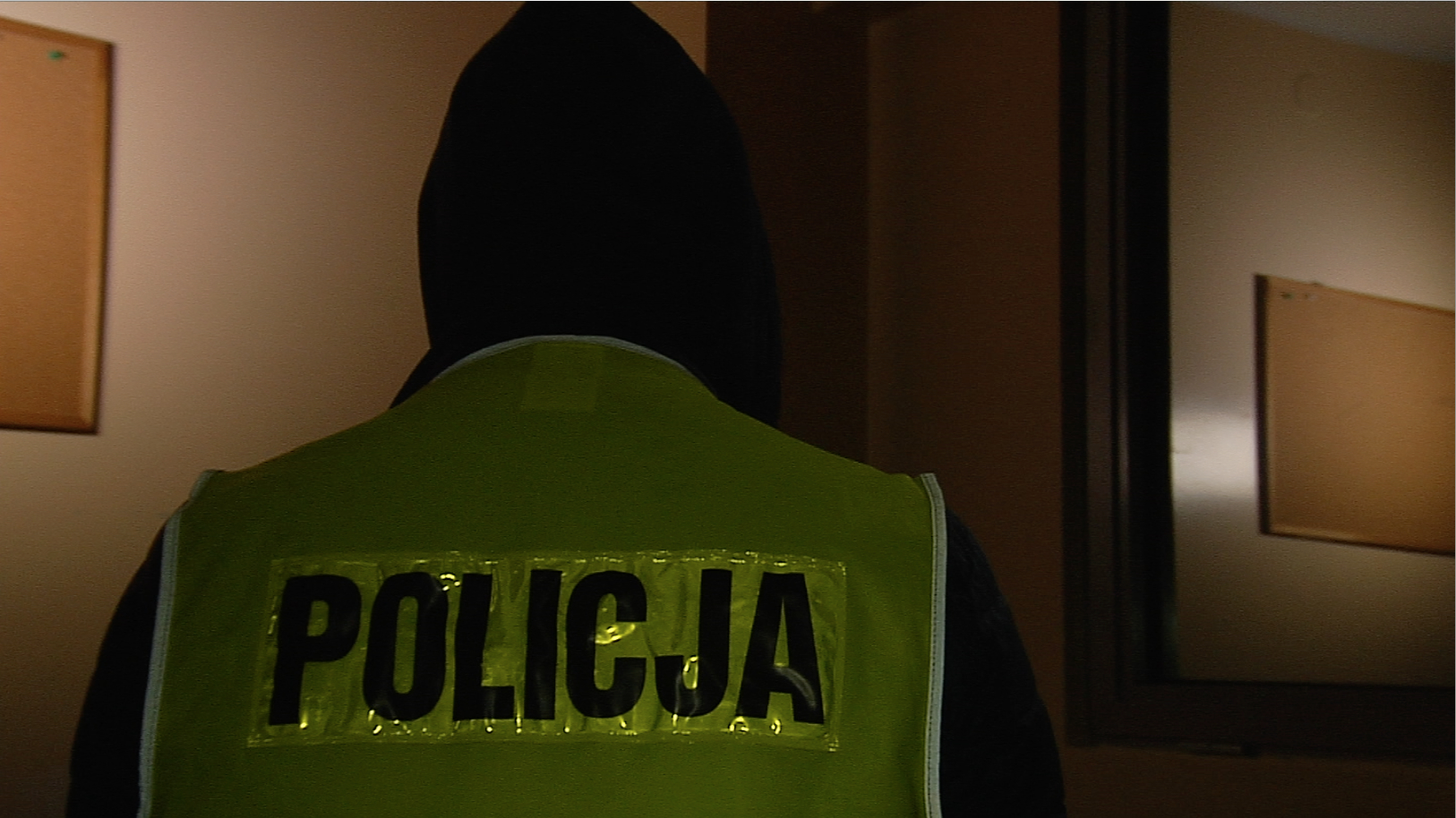
Common Laxatives Linked To Serious Behavioral Issues In Children, Warn Experts
Authored by Sheramy Tsai via The Epoch Times (emphasis ours),
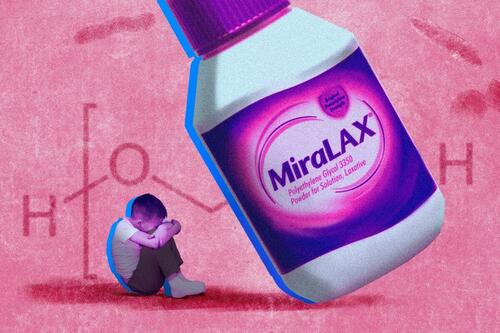 (Illustration by The Epoch Times, Shutterstock, Getty Images)
(Illustration by The Epoch Times, Shutterstock, Getty Images)Bradley Koehler resembled any four-year-old, always on the move and eager to explore the world around him. Healthy and well-adjusted, he began having episodes of bed-wetting, despite being successfully potty-trained.
Alarmed by this regression, his parents sought medical advice. Doctors found that Bradley was suffering from constipation. The retained stool was exerting pressure on his bladder, inadvertently resulting in the nighttime incidents. His medical team prescribed daily doses of Miralax to alleviate the condition.
Over the next few years, shifts in Bradley’s behavior alarmed his parents. At soccer practice, he began to lash out, his small legs delivering kicks to his peers in bursts of unprovoked aggression. School assignments, which previously captured his interest, were now met with outright defiance—papers crumpled and thrown on the classroom floor. His parents were concerned but chalked his behavior up to him just “being a boy.”
During this time, his struggles with bowel movements continued. At the age of eight, Bradley began having seizures leading to a diagnosis of temporal lobe epilepsy. Bradley’s distress escalated to saying he “wanted to die,” attempting to leap from the family’s deck and grabbing for kitchen knives. In response, his family turned to UW Madison Children’s Hospital for psychiatric support.
“In third grade, the wheels really began falling off the bus,” Bradley’s father, Mike Koehler, shared with The Epoch Times. His parents, teachers, administrators, and behavioral interventionists came together to address Bradley’s worsening behavior, which had deteriorated to the point that he required more support than a traditional classroom could offer.
 Mike and Bradley Koehler. (Courtesy of Mike Koehler)
Mike and Bradley Koehler. (Courtesy of Mike Koehler)The Laxative Connection
It was during a hospital visit in 2015 with Bradley, then aged 9, that a breakthrough came in an unexpected form. A family friend mentioned an article from the New York Times to Mr. Koehler, highlighting concerns over MiraLAX. This prompted Bradley’s parents to consider the possibility that the laxative could be responsible for their son’s significant shifts in behavior and health. “It was like a lightbulb went off,” Mr. Koehler remarked. Their growing suspicions found resonance with numerous other families who reported similar issues following their children’s use of the laxative.
The U.S. Food and Drug Administration (FDA) allocated nearly a million dollars to investigate the potential adverse effects of MiraLAX on children despite the drug not being approved for those under 17. A decade later, this research, assigned to the Children’s Hospital of Philadelphia (CHOP), remains incomplete.
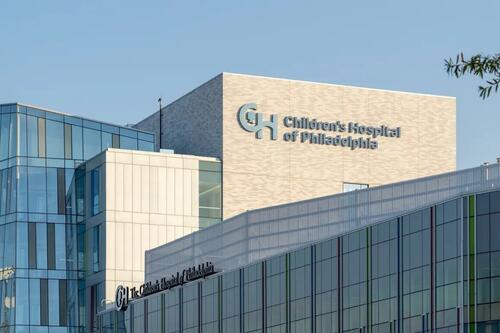 Children’s Hospital of Philadelphia in the King of Prussia, Pennsylvania, USA, November 5, 2023. (JHVEPhoto/Shutterstock)
Children’s Hospital of Philadelphia in the King of Prussia, Pennsylvania, USA, November 5, 2023. (JHVEPhoto/Shutterstock)The Epoch Times attempted to contact Dr. Robert Heuckeroth, lead researcher and Dr. Matthew Hodgson, vice president of research compliance and regulatory affairs, for updates and insights on MiraLAX and childhood constipation. The reply came only from Emily DiTomo, director of public relations, who stated, “Neither Bob nor Matthew is available to speak with you for your article.” When probed further, Ms. DiTomo stated, “Children’s Hospital of Philadelphia does not have any information to share.”
Meanwhile, families like Bradley’s, potentially affected by the adverse effects of a widely used treatment, have been left to resolve the problem themselves.
The Constipation Crisis in Children
Nearly one in 10 children worldwide suffer from constipation, contributing to 3 percent of U.S. pediatric clinic visits—a number that escalates to 25 percent in pediatric gastroenterology clinics.
“Functional constipation is common in childhood and is associated with geographical location, lifestyle factors, and stressful life events,” notes research published in The Journal of Pediatrics.
Lisa Santo Domingo, director of the Pediatric Multidisciplinary Chronic Constipation Clinic at Johns Hopkins Children’s Center, suggests the reported figures for constipation in children are too low. “Some parents may underreport or dismiss mild or intermittent symptoms, leading to an underestimation of prevalence rates,” she explained to The Epoch Times in an email. She added that trends indicate an increasing prevalence of constipation among children in recent years.
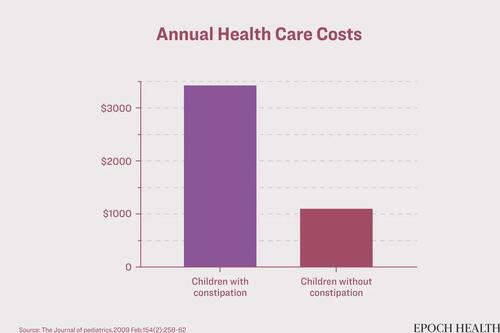 Annual health care costs for children with constipation are triple that of children without constipation, $3430 compared to $1099. (The Epoch Times)
Annual health care costs for children with constipation are triple that of children without constipation, $3430 compared to $1099. (The Epoch Times)Treating constipation is not cheap. Children with constipation incur increased annual medical costs of $3.9 billion, according to The Journal of Pediatrics. Health care expenses for children with constipation are threefold higher compared to those without, and one out of four children carry this issue into adulthood.
Practitioners diagnose constipation using the Rome IV criteria, identifying symptoms such as infrequent bowel movements, hard stools, and fecal incontinence. Factors contributing to this condition range from diets rich in processed foods and low in fiber, sedentary habits, toilet training methods, anxiety, medications, and conditions like obesity and irritable bowel syndrome.
Constipation’s toll goes beyond physical pain, deeply affecting psychological health. Research indicates that children dealing with constipation report a lower quality of life than their peers, encountering greater challenges in relationships and academics and heightened levels of anxiety and depression.
“Children experiencing constipation may feel embarrassed, frustrated, or anxious about their symptoms, especially if they result in accidents or social stigma,” Ms. Santo Domingo said. “Persistent symptoms may lead to absenteeism, decreased academic performance, and social withdrawal.”
MiraLAX: Doctor Preferred
Physicians often treat constipated children with laxatives. Their preferred choice is polyethylene glycol (PEG 3350), or MiraLAX, despite the drug not being approved for those under 17. Praised for its effectiveness, safety, and user-friendly format, MiraLAX powder dissolves in water or other drinks. It pulls water into the intestines to ease bowel movements. PEG 3350 is also present in several other laxatives and bowel preps, including GaviLAX, GlycoLax, ClearLax, and GoLytely, to name a few.
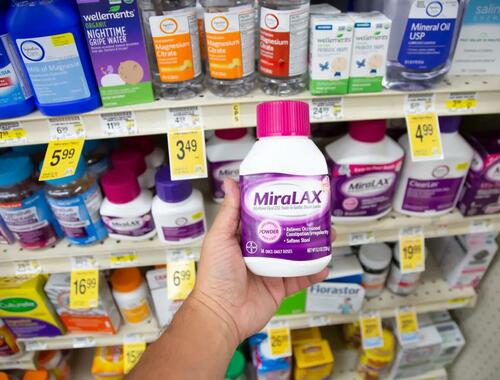 Miralax, is an over-the-counter drug that, along several generic versions, uses PEG 3350 as its active ingredient. (JHVEPhoto/Shutterstock)
Miralax, is an over-the-counter drug that, along several generic versions, uses PEG 3350 as its active ingredient. (JHVEPhoto/Shutterstock)According to Ms. Santo Domingo, “MiraLAX is commonly used as a first-line or adjunctive treatment for constipation in children and is generally considered safe and effective when used appropriately.” She highlighted its effectiveness for a spectrum of issues, from mild to moderate constipation to stool leakage, stressing its vital role in treatment and prevention for affected children.
In an email to The Epoch Times, a representative from Bayer, the company behind MiraLAX, shared the laxative’s journey from its initial introduction as a prescription medication in February 1999 to its FDA approval for over-the-counter sales in 2006, specifically for “adults and children 17 years and older for up to 7 days unless otherwise directed by a doctor.”
Despite official recommendations, Bayer references “many independent clinical studies” that affirm PEG 3350’s safety in younger patients, bolstering their support for its pediatric use.
Doctors commonly prescribe MiraLAX off-label for children, supported by organizations such as the North American Society for Pediatric Gastroenterology, Hepatology, and Nutrition. “In clinical practice … it is common for pediatric gastroenterologists to prescribe PEG 3350 for chronic use and there have been no reports of serious, long-term side effects in the medical literature,” they write.
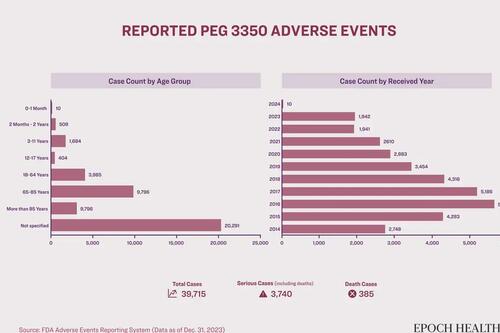 The FDA’s Adverse Events Reporting System (FAERS) has recorded thousands of potential incidents stemming from PEG3350-based drugs. (The Epoch Times)
The FDA’s Adverse Events Reporting System (FAERS) has recorded thousands of potential incidents stemming from PEG3350-based drugs. (The Epoch Times)According to a search by The Epoch Times of the FDA’s Adverse Events Reporting System, around 39,715 adverse reactions to PEG 3350 have been logged, including 2,607 cases involving children under 18. Experts caution that this may be the tip of the iceberg, suggesting widespread underreporting.
Bayer reassures patients and practitioners, stating, “As part of Bayer’s ongoing commitment to consumer well-being, we regularly track, analyze, and report all adverse event data related to the use of the product.” This vigilance, they argue, reinforces the “continued safe use of MiraLAX.”
“Before recommending MiraLAX or any laxative therapy, we conduct a thorough evaluation,” explains Ms. Santo Domingo. “We also provide education and guidance to parents and caregivers on the appropriate use.”
Read more here…
Tyler Durden
Fri, 05/10/2024 – 23:05











